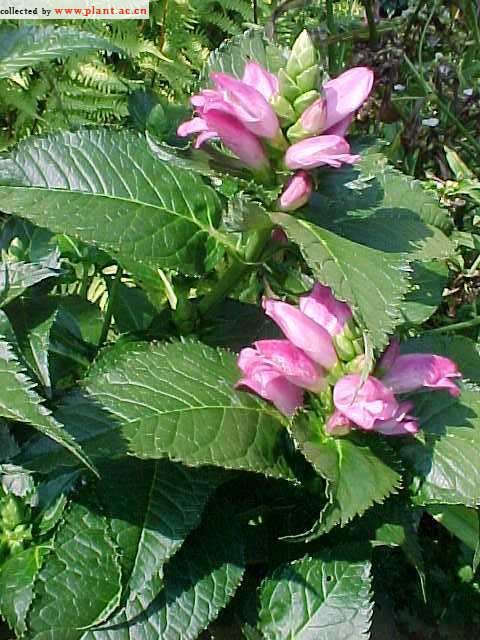Chelone lyoniiTurtlehead
科:玄参科
Family:Scrophulariaceae
common name:Turtlehead
introduce:Plant Type: Herbaceous perennial
Family: Scrophulariaceae
Missouri Native: No
Native Range: Mountains of North Carolina, South Carolina, Tennessee
Height: 2 to 4 feet
Spread: 1.5 to 2.5 feet
Bloom Time: July - September
Bloom Color: Rose-purple
Sun: Part shade (only)
Water: Medium to wet
Maintenance: Medium
General Culture:
Best grown in medium wet to wet, rich, humusy soils in full sun to part shade. Appreciates a good composted leaf mulch, particularly in full sun areas. Consider pinching back the stem ends in spring to reduce mature plant height, especially if growing plants in strongly shaded areas where they are more likely to need me support. In optimum environments, however, staking is usually not required. Spreads slowly by rhizomes to form large clumps, but is not invasive. May self-seed in moist soils.
Noteworthy Characteristics:
This species of turtlehead (sometimes called pink turtlehead) is an upright, clump-forming, rhizomatous plant which typically grows 2-4 tall on stiff, square stems and is native to the southern Appalachians. Hooded, snapdragon-like, two-lipped, clear pink flowers (to 1" long) appear in tight, spike-like terminal racemes from late summer into fall. Flowers purportedly resemble the heads of open-mouthed turtles. Coarsely-toothed, ovate to broad-lanceolate, dark green leaves (to 6" long).
Problems:
No serious insect or disease problems. Some susceptibility to mildew, particularly if soils are kept on the dry side and/or air circulation is poor. If grown in too much shade, plants may need some support.
Uses:
Shade or woodland gardens. Bog gardens. Pond or water garden peripheries. Good border plant as long as soil moisture requirements can be met.
